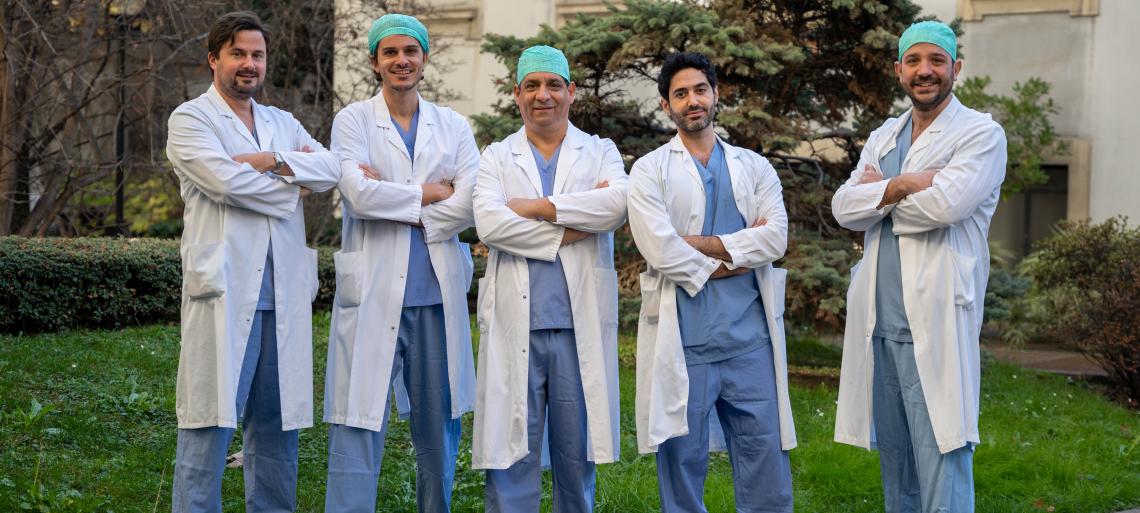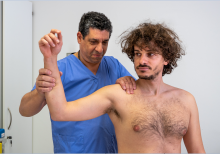WHAT IS AN ORTHOPAEDIC EXAMINATION FOR?
The orthopaedic examination is a non-invasive and painless examination performed by a specialist in the locomotor system: the orthopaedist.
During this examination, the health of the entire system (bones, joints, muscles) is assessed.
During this examination, the specialist examines the patient's musculoskeletal system, first focusing on the problem complained of by the patient and the regions involved, and then examining the patient in his or her entirety.
The most common conditions are arthritis and osteoarthritis, meniscus problems (especially in young people who play football as a sport), cruciate ligament and rotator cuff injuries, carpal tunnel syndrome (which generally affects people who use their hands for precision work), Morton's neuroma, plantar fasciitis and ulnar nerve compression syndrome.
WHEN TO UNDERGO AN ORTHOPAEDIC EXAMINATION
The most common causes for patients to seek orthopaedic advice are:
- bone and joint pain;
- muscle pain (continuous or limited to certain movements);
- trauma (very common traumas are shoulder dislocation, bone fractures and ligament injuries).
HOW IS IT CARRIED OUT?
Like all medical examinations, the orthopaedic examination begins with a discussion between the doctor and the patient (anamnesis), which is useful for the specialist to know:
- the reason why the patient requested an examination;
- the symptoms manifested;
- any related pathologies;
- the health status of close family members, which may be important for the diagnosis of degenerative diseases that run in families;
- the type of job carried out (if sedentary);
- the sport activity practised (many orthopaedic pathologies are related to the use of certain anatomical districts in particular sports);
- aking medication.
The next step is the examination of the apparatus: the posture, muscle strength, reflexes, range of movement and the presence of any swelling in the area of the joints are examined.
At the end of this observation, the doctor may already be able to make a diagnosis, or may have a diagnostic suspicion that needs to be confirmed by prescribing other variable investigations, depending on the type of problem reported by the patient: X-rays, CT, MRI, blood, urine or joint fluid tests.
ANY CONTRAINDICATIONS OR RISKS
The orthopaedic examination has no contraindications and carries no risks whatsoever.
PREPARATION PROCEDURE
No specific preparation is necessary for the patient.
ORTHOPAEDICS AT AUXOLOGICO
Orthopaedics and Traumatology at Auxologico is performed by three Operating Units that combine an advanced level of technology with the well-known professionalism of orthopaedic and traumatology surgeons and anaesthetist and resuscitation colleagues.
Outpatient activities are performed at all Auxologico sites in Lombardy and Piedmont, where all the diagnostic imaging equipment (traditional radiology, nuclear magnetic resonance imaging, CT scans, ultrasound scans) necessary for the correct diagnostic assessment of each pathology is also available.
CAPITANIO HOSPITAL
Orthopaedic surgery is performed at the Capitanio Hospital in Milan and covers all needs related to problems of the osteoarticular system. In particular, the most advanced techniques of minimally invasive prosthetic surgery are used for hip and knee prostheses, also applied in cases of revision of failed prosthetic implants. Shoulder and hand surgery, mini-invasive foot surgery and arthroscopic treatment of joints are other areas having particular expertise.
A continuous activity of clinical research and development of the most modern surgical techniques is practised in the hospital orthopaedics and traumatology department, with unquestionable benefits for the patient: high technologies, new materials, the most modern surgical innovations have led to evident improvements to the surgical procedures that, in many cases, reduce post-operative discomforts, such as pain and temporary disability, to zero.
Auxologico has developed precise protocols governing patient care in the post-operative and rehabilitation phase through multidisciplinary teams of physiatrists, orthopaedic surgeons and physiotherapists.
BOOK NOW


